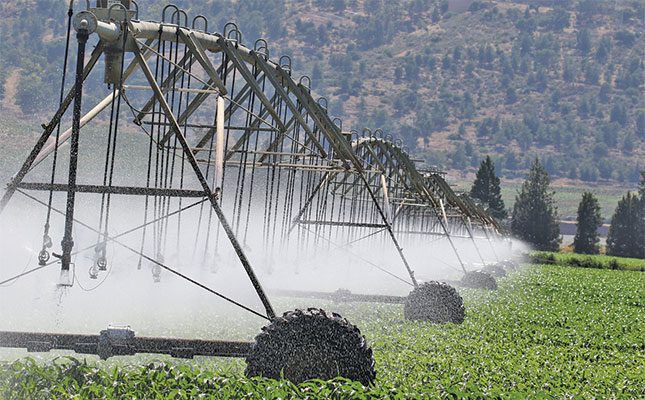Irrigation has revolutionized agriculture, empowering farmers worldwide to boost crop yields and enhance food security. By providing a consistent water supply, irrigation mitigates the challenges posed by unpredictable weather patterns, ensuring crops receive the necessary hydration for optimal growth.
Stabilizing Crop Production
A reliable water source is crucial for crop stability. Irrigation reduces dependence on erratic rainfall, allowing farmers to cultivate crops more predictably and robustly, leading to higher yields.
Extending Growing Seasons
Irrigation enables farmers to extend growing seasons beyond the traditional rainy periods, facilitating multiple cropping cycles annually. This extension significantly increases the annual output of various crops.
Enhancing Water Efficiency
Modern irrigation techniques improve water efficiency, helping farmers conserve water and reduce related costs. Methods like drip and sprinkler systems deliver water directly to plant roots, minimizing waste and promoting healthier crops.
Global Success Stories
While adopting irrigation can be challenging for small-scale farmers due to costs and technical requirements, many have successfully integrated these systems, leading to remarkable improvements in crop production.
India’s Agricultural Transformation
India’s agricultural landscape has been profoundly transformed by irrigation. In the 1950s and 1960s, the government launched initiatives to enhance irrigation infrastructure, including the construction of dams and canals like the Bhakra Nangal Dam and the Hirakud Dam. These projects significantly improved water availability for agriculture.
The Green Revolution of the late 1960s to the 1980s saw the adoption of modern irrigation techniques, such as tube wells and pump sets, leading to yield increases of up to 200% in wheat and rice production. In the 1980s and 1990s, drip and sprinkler irrigation systems gained popularity, especially in water-scarce regions, enhancing water-use efficiency and supporting the cultivation of high-value crops.
Despite these advancements, challenges remain. As of 2018, only about 34.5% of India’s cropland was under irrigation, indicating significant potential for expansion. Efforts to increase irrigation coverage continue, aiming to further boost agricultural productivity and farmer livelihoods.
China’s Irrigation Advancements
China’s commitment to irrigation has substantially increased agricultural productivity. Irrigated croplands account for half of the total cropland area and produce about 75% of food and more than 90% of industrial crops.
The Chinese government has invested heavily in water management and infrastructure over the past 50 years, leading to significant achievements in water supply and irrigation. Ancient irrigation systems, such as the Qimenyan Irrigation System in Anhui Province, established during the Western Han Dynasty, continue to play a vital role in agriculture today.
Modern irrigation methods, including micro-irrigation systems like drip and sprinkler irrigation, have been adopted to enhance water-use efficiency. In regions like Xinjiang and Inner Mongolia, the use of drip irrigation for fruits and vegetables has led to yield increases of 30% to 50%, benefiting crops like tomatoes, melons, and grapes.
Empowering Small-Scale Farmers
Small-scale farmers often face challenges in adopting irrigation due to high initial costs and technical complexities. However, when implemented, irrigation can significantly enhance their livelihoods by increasing crop yields and income.
Addressing these challenges requires a multifaceted approach, including improving access to financing, providing technical training and support, ensuring reliable water supplies, and creating favorable policy environments to encourage the adoption of irrigation methods among small-scale farmers. Government initiatives and support are crucial in facilitating this transition, enabling farmers to achieve commercial success and contribute to food security.


